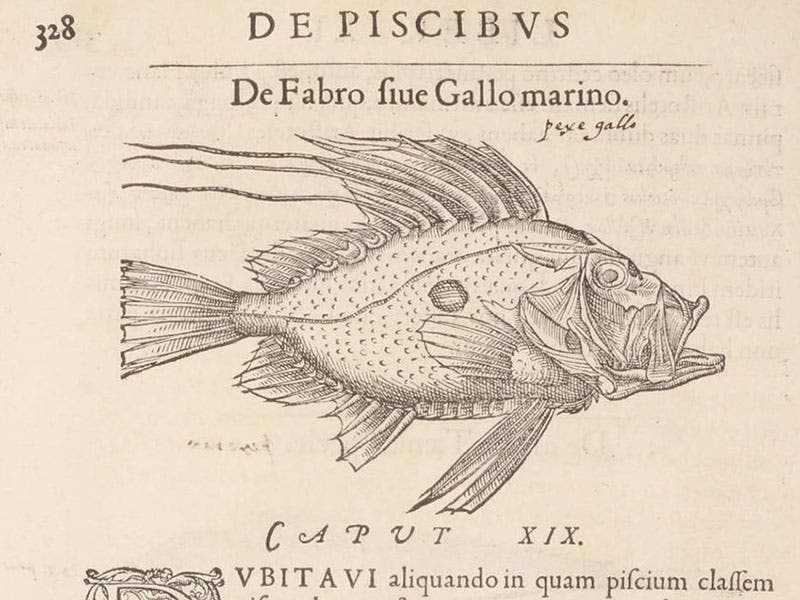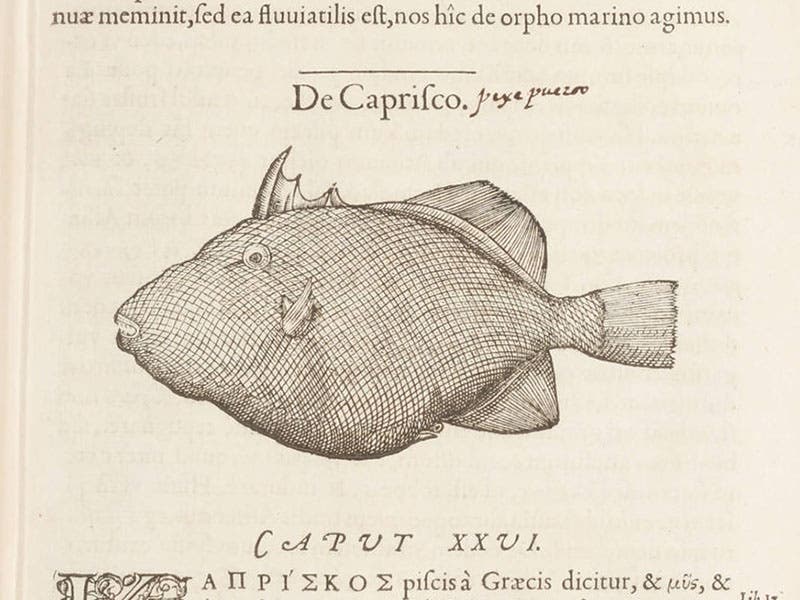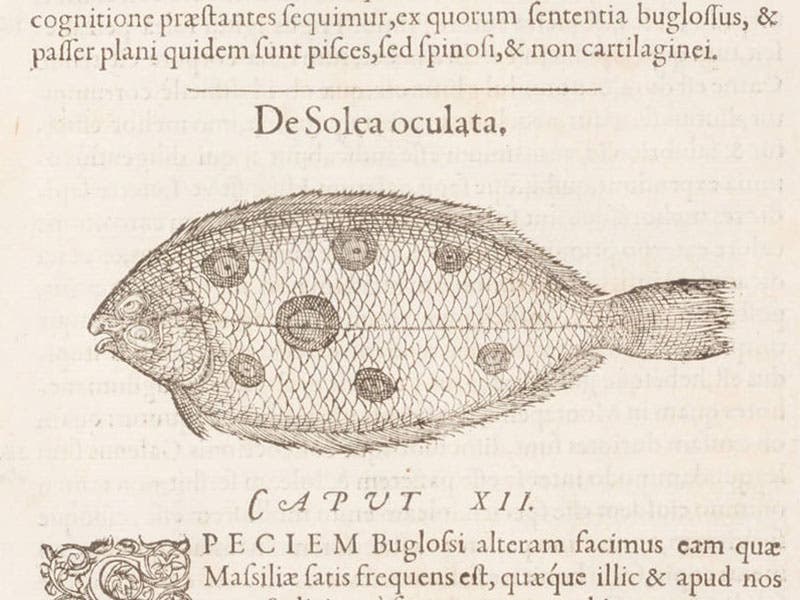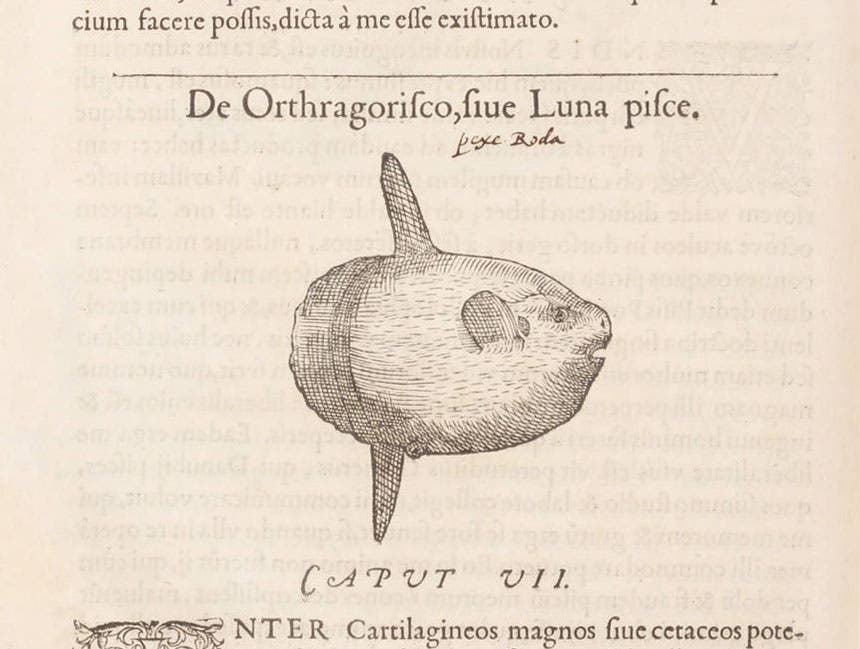Scientist of the Day - Guillaume Rondelet
Guillaume Rondelet, a French naturalist of the late Renaissance, was born Sep. 27, 1507. Rondelet taught medicine at Montpellier, in southern France, and in his later years he compiled a zoological encyclopedia of marine life, publishing it in 1554-55 as Libri de piscibus marinus (Books on marine fish, but actually containing marine mammals, reptiles, and some shellfish as well). The work is notable because most of the text is based on first-hand observations by Rondelet of specimens that were collected for him by fisherman, and because the woodcut illustrations were all done from life, which was a brand new idea in zoology. The woodcuts are small and simple, but so accurately done that modern ichthyologists claim they can identify nearly every illustration in the book (and there are hundreds).
Rondelet is usually considered, with Konrad Gesner and Pierre Belon, as one of the three fathers of Renaissance zoology, all of whom insisted on the importance of personal observation and the need to include images drawn from life. Indeed, the title of Rondelet’s book continues: …in quibus verae piscium effigies expressae sunt— “in which true images of fish are portrayed.” We have both volumes of Rondelet’s book in the History of Science Collection (and most of the works of Gesner and Belon as well).
The images above, all details of woodcuts in Rondelet’s book, depict, in order: a John Dory, a triggerfish, a sole, and an ocean sunfish. The last image shows the entire page that contains the depiction of the ocean sunfish, so you can see how small these woodcuts really are.
Dr. William B. Ashworth, Jr., Consultant for the History of Science, Linda Hall Library and Associate Professor, Department of History, University of Missouri-Kansas City. Comments or corrections are welcome; please direct to ashworthw@umkc.edu.







![“Aurora Borealis,” hand-colored wood engraving by Josiah Wood Whymper, [Natural Phenomena], plate 2, 1846 (Linda Hall Library)](https://assets-us-01.kc-usercontent.com:443/9dd25524-761a-000d-d79f-86a5086d4774/0245ffcb-b70c-477c-8792-0a73ebd54eb2/Whymper%2011.jpg?w=210&h=210&auto=format&fit=crop)



